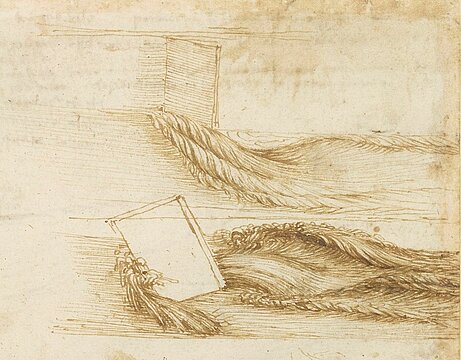Qualitative visualization – Drawings of Leonardo da Vinci
Five hundred years ago, by careful observation of the movement of water such as a flow past a planar obstruction and a water fall, Leonardo da Vinci (1452 -1519) was able to detect and extract general features of the flow patterns on the surface of the water flow and sketch them in his drawings in such a way that these features could easily be understood by others. In addition, he described his observations in his notes.
By means of the newly invented techniques of letter press printing and copperplate printing it was possible to communicate the essential features of visualized flows to fellow human beings and to following generations.


As far as the process of perception of unsteady flow phenomena is concerned, it should be noted, that an evidence of extraordinary visual acuity of Leonardo da Vinci has been suggested and motivated, which would have allowed him to resolve temporal changes of structures in turbulent water flows or of the shape of wings of dragon flies with higher frequency than his fellow human beings could perform.
David S. Thaler: Evidence for extraordinary visual acuity in Leonardo's comment on a dragonfly.
In: Actes du Colloque International d’Amboise: Leonardo de Vinci, Anatomiste. Pionnier de l’Anatomie comparée, de la Biomécanique, de la Bionique et de la Physiognomonie. CNRS editions, Paris. Henry de Lumley (ed.).
Contents provided by Juergen Kompenhans, 2024-05-04
